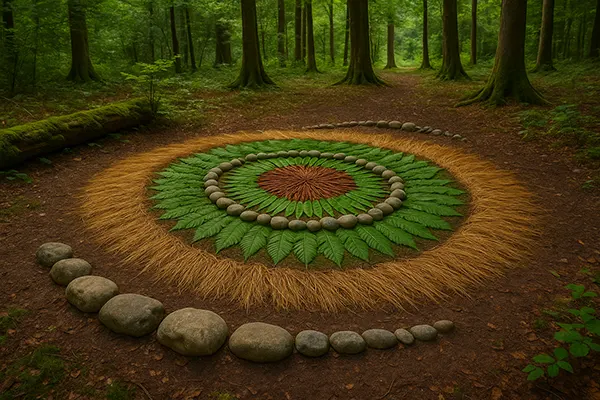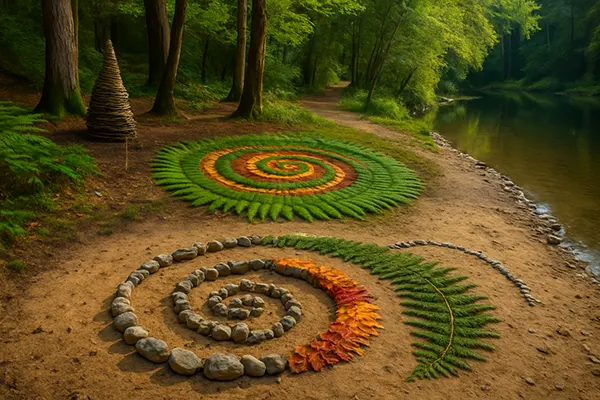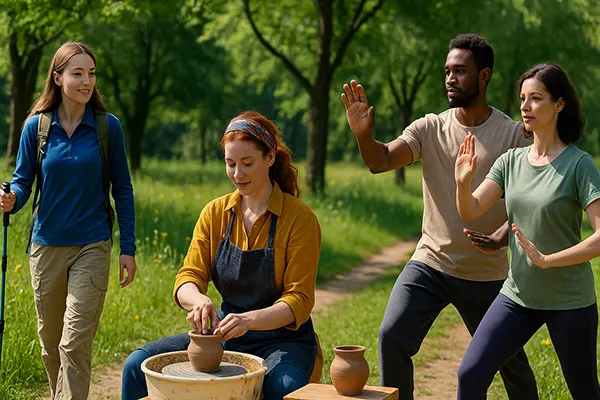Land Art in Nature: The Disappearing Form of Environmental Creativity
Land art, or earth art, is an artistic movement that thrives outside of galleries, focusing on natural materials and temporary installations within outdoor environments. It draws from the earth itself—stones, branches, leaves, water, and sand—to form sculptures and arrangements that embrace impermanence and environmental harmony. This form of expression invites not only contemplation but also active participation in the landscape. In 2025, land art continues to flourish across forests, coastlines, and meadows, becoming a silent dialogue between the creator, nature, and time.
Core Principles of Land Art
At the heart of land art lies a deep respect for nature. Works are crafted in situ, using materials found on-site without introducing synthetic substances or altering the environment irreversibly. Artists are mindful of leaving no trace beyond the natural decay of their installations, aligning with ecological ethics.
Temporality is another vital element. These artworks are not meant to last. They erode, collapse, blow away, or rot—returning to the landscape from which they came. This fleeting existence captures the essence of change, making every viewing moment unique.
Finally, humility and presence are fundamental. Land art requires awareness of place and an attunement to the rhythms of nature. Artists become observers and facilitators, not dominators of the land. The works are often silent meditations on scale, material, and time.
Andy Goldsworthy and the Language of Natural Forms
Andy Goldsworthy is perhaps the most recognised figure in land art. His installations, crafted from leaves, icicles, stones, and soil, appear in woods, fields, and riverbeds around the world. He treats nature not just as a medium but as a collaborator, responding to light, temperature, and weather.
Goldsworthy’s art is meticulously documented before it disappears—each piece a quiet testament to fragility and transience. Whether it’s a spiralling stone path through a stream or a circle of vibrant leaves on snow, his work creates a dialogue between control and surrender.
Other artists, such as Richard Long and Nils-Udo, share this reverence for environment and process. Long’s walks and simple stone alignments reflect journeys and traces of time, while Nils-Udo integrates colour, light, and space in forest and mountain settings. Their art doesn’t seek permanence but celebrates the evolving moment.
Ideas for Creating Your Own Projects
Anyone can engage with land art. Begin with your local park, beach, or forest. Choose a site respectfully, avoiding areas with fragile vegetation or nesting wildlife. Start small—perhaps a spiral of pebbles, a tower of twigs, or a natural mandala with leaves and seeds.
Use only materials found on the ground—avoid picking live plants or disturbing habitats. The aim is to form a temporary sculpture that blends with the surroundings and can naturally decompose or disperse. Tools are optional; your hands and eyes are the primary instruments.
Let the environment guide you. How does the wind move? Where does the light fall? What colours contrast or harmonise? Take photos if you wish to preserve the moment—but the true reward lies in the act of creating something ephemeral and harmonious.
Accessible Inspiration for Beginners
Start with circles, spirals, or lines—forms that occur naturally and are easy to replicate. Try arranging pinecones along a path, stacking stones beside a stream, or laying flower petals in a shaded glade. Simplicity is powerful in land art.
Seasonal changes offer endless variation. In spring, use blossom and fresh leaves. In autumn, experiment with dry grass and vivid foliage. Even winter snow can become a canvas for footprints or arranged icicles. Each material brings its own emotion and message.
Keep a visual journal to document your creations and ideas. Photographing the process can help reflect on your interaction with nature. Over time, you’ll develop a personal style and a deeper connection with your surroundings.

Why Land Art Matters in 2025
In a world increasingly dominated by screens and rapid consumption, land art offers a return to slowness and tactility. It encourages mindfulness, ecological awareness, and creativity without waste. It’s a non-commercial, meditative practice rooted in place and time.
Educational programmes across Europe now integrate land art into outdoor learning. Children and adults alike are encouraged to build with nature, not against it, fostering curiosity and stewardship of the environment. These projects cultivate not just art, but empathy and attentiveness.
Moreover, climate concerns have reignited interest in sustainable artistic practices. Land art—by its very nature—does not contribute to environmental degradation. It aligns with broader cultural movements toward ecological responsibility and local engagement.
The Future of Environmental Creativity
Land art is not a trend; it’s a timeless response to the human need to shape and understand the world. As more people reconnect with natural spaces, this form of expression will continue to evolve—intimate, transient, and grounded in place.
In June 2025, many land art festivals and workshops across the UK, Scandinavia, and Canada focus on local materials, shared knowledge, and non-invasive methods. Community participation is key—these are inclusive, hands-on events without the pressure of artistic perfection.
Ultimately, land art teaches us to appreciate the ephemeral, to create without possession, and to observe with care. In doing so, it bridges art and ecology, reminding us that beauty can be brief—and that’s exactly what makes it meaningful.





